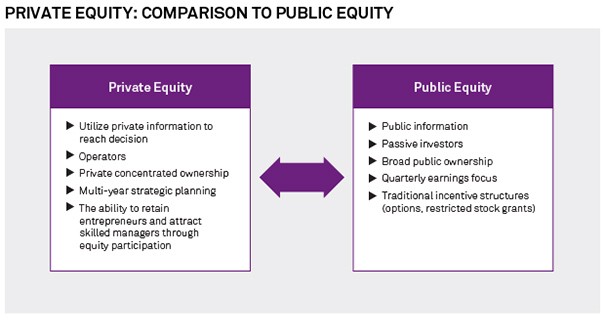How to Invest in Private Equity
Post on: 25 Май, 2015 No Comment

Private equity is capital made available to private companies or investors. The funds raised might be used to develop new products and technologies, expand working capital, make acquisitions or strengthen a companys balance sheet. Institutional investors and wealthy individuals are often attracted to private-equity investments. This includes large university endowments, pension plans and family offices. Their money goes into pools that represent a source of funding for early-stage, high-risk ventures and plays a major role in the economy. Often, the funds will go into new companies believed to have significant growth possibilities in industries such as: telecommunications, software, healthcare and biotechnology. Private-equity firms try to add value to the companies they buy, with the goal of making them even more profitable.
Private equity investing is not easily accessible for the average investor. Most private-equity firms typically look for investors who are willing to commit as much as $25 million. Although some firms have dropped their minimums to $250,000, this is still out of reach for most people, but there are ways the average investor can dip their toe into the private equity waters.
Fund of Funds
A fund of funds holds the shares of many private partnerships that invest in private equities. It provides a way for firms to increase cost effectiveness and thereby reduce their minimum investment requirement. This can also mean greater diversification, since a fund of funds might invest in hundreds of companies representing many different phases of venture capital and industry sectors. A fund of funds has the potential to offer less risk than you might experience with an individual private-equity investment due to its diversification. The disadvantage is that there is an additional layer of fees paid to the fund of funds manager. Minimum investments can be in the $100,000 to $250,000 range.
Private-Equity ETF
You can purchase shares of an exchange-traded fund (ETF) that tracks an index of publicly traded companies that invest in private equities. Since you are buying individual shares over the stock exchange, you dont have to worry about minimum investment requirements. However, like a fund of funds, an ETF will add an extra layer of management expenses that you might not encounter with a direct, private-equity investment. Also, depending on your brokerage, each time you buy or sell shares, you might have to pay a brokerage fee.
Special-Purpose Acquisition Companies (SPAC)
You can also invest in publicly traded shell companies that make private-equity investments in undervalued private companies. But they can be risky. The problem is that the SPACs might only invest in one company, which wont provide much diversification. They may also be under pressure to meet an investment deadline as outlined in their IPO statement. This could make them take on an investment without giving it thorough due diligence.
There are several key risks in any type of private-equity investing. As mentioned earlier, the fees of private-equity investments that cater to smaller investors can be higher than you would normally expect with conventional investments, such as mutual funds. This could reduce returns. Additionally, as private-equity investing opens up to more people, the harder it could become for private-equity firms to locate good investment opportunities.














